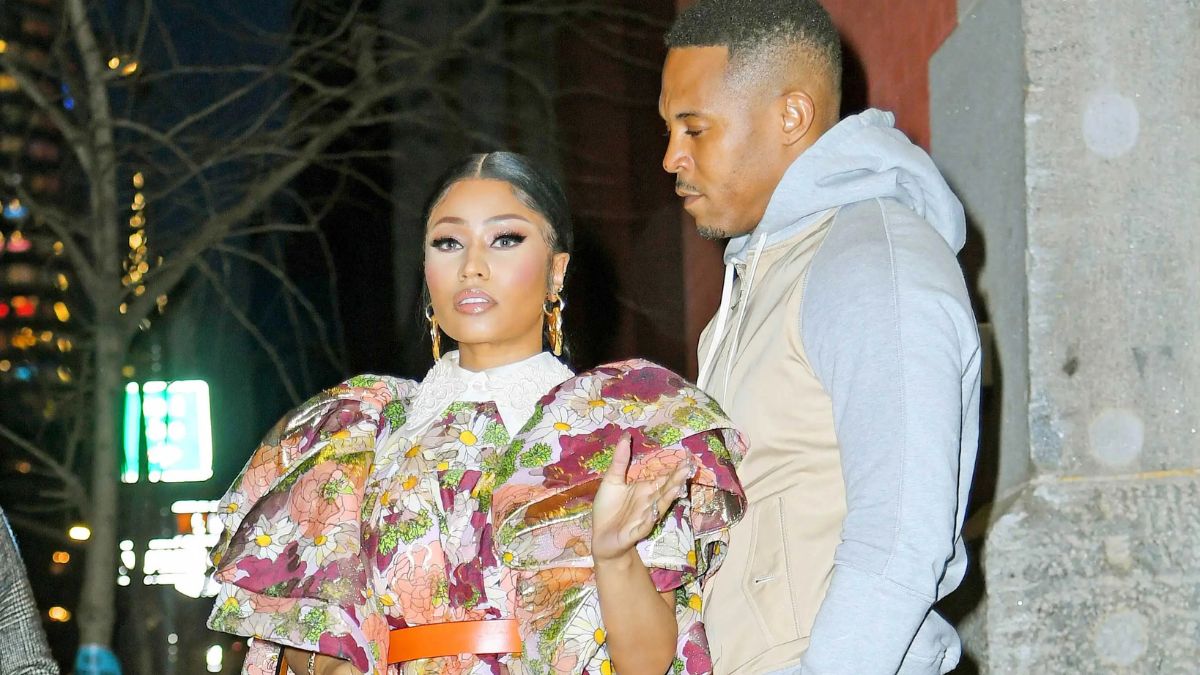TOPIC
The Science Behind Temperature Scales: Converting 40 degrees C to F

Temperature is a fundamental aspect of our daily lives. Whether you’re cooking, checking the weather, or planning an outdoor adventure, understanding temperature scales plays a crucial role. But have you ever wondered about the science behind these scales? How do we convert between Celsius and Fahrenheit? If you’ve found yourself asking how to turn 40 degrees C to F, you’re in good company. This blog post will unravel the intricacies of temperature measurement while guiding you through this specific conversion with ease. Let’s dive into the fascinating world of temperature scales!
The Celsius Scale and Its Origins
The Celsius scale, named after Swedish astronomer Anders Celsius, was developed in 1742. His original concept set the freezing point of water at 100 degrees and the boiling point at 0 degrees. This reversed system later evolved into the familiar format we use today.
Celsius’s idea stemmed from a fascination with temperature’s effect on physical states of matter. It aligned closely with scientific exploration during that era.
In 1948, the scale was officially adopted by the International System of Units (SI). Its simplicity and ease of understanding have made it widely used around the globe, especially in scientific contexts.
This metric approach is favored for its straightforward nature. With each degree representing an equal incremental change, it allows for clearer communication across various fields such as meteorology and physics.
The Fahrenheit Scale and Its History
The Fahrenheit scale was developed in the early 18th century by German physicist Daniel Gabriel Fahrenheit. He introduced this temperature measurement system in 1724, aiming to create a more precise way of measuring heat.
Fahrenheit’s original scale set freezing point at 32 degrees and boiling point at 212 degrees, based on the properties of water. This choice was revolutionary for its time and offered practical applications for daily life.
Interestingly, he used three reference points: the lowest temperature he could measure with a mixture of ice and salt, human body temperature—which he approximated—and water’s freezing and boiling points.
Over time, Fahrenheit’s system gained traction in English-speaking countries, especially in the United States. The familiarity of everyday weather reports has helped solidify its place in American culture.
Understanding the Conversion Formula
To convert temperatures between Celsius and Fahrenheit, a specific formula is used. This formula helps bridge the gap between the two scales.
For converting Celsius to Fahrenheit, the equation is:
F = (C × 9/5) + 32.
In this formula, you multiply the Celsius temperature by nine-fifths. Then, add thirty-two to that result.
This approach effectively translates how we perceive heat in different contexts. It’s crucial for fields like cooking and weather reporting where accuracy matters.
Understanding this conversion can enhance your practical knowledge of everyday tasks as well as scientific discussions about temperature-related phenomena.
Using this simple calculation opens up a world of clarity when dealing with various measurement systems around the globe.
Step-by-Step Guide to Converting 40 degrees C to F
Converting 40 degrees C to F is straightforward once you know the formula. Start by taking your Celsius temperature and multiplying it by 9/5.
For our example, multiply 40 by 9. This gives you 360. Next, divide that number by 5, which equals 72.
Now add the result to 32. So, take your previous total of 72 and add it to 32 for a final result of 104 degrees Fahrenheit.
This method can be applied easily for any temperature conversion between these two scales. With just a few simple steps, you’ve transformed Celsius into Fahrenheit seamlessly!
Practical Applications of Temperature Conversion
Temperature conversion plays a vital role in many everyday activities. When cooking, recipes often list temperatures in Fahrenheit or Celsius. Knowing how to convert between them ensures your dishes turn out just right.
Travelers also benefit from understanding temperature scales. Whether you’re visiting Europe or the United States, being aware of local weather reports helps you pack appropriately and enjoy your trip.
In science and engineering fields, accurate temperature measurements are crucial. Professionals rely on precise conversions for experiments and processes that require specific thermal conditions.
Healthcare professionals use these conversions too, especially when monitoring patient vitals. Understanding body temperature ranges can be essential for diagnosis and treatment decisions.
Industries like agriculture depend on temperature data for crop management. Converting temperatures allows farmers to optimize planting schedules based on climatic conditions across different regions.
Conclusion: The Importance of Understanding Temperature Scales
Understanding temperature scales is essential in our daily lives. Whether you’re cooking, traveling, or even checking the weather, knowing how to convert temperatures can make a significant difference.
Different regions use different scales—Celsius in most parts of the world and Fahrenheit primarily in the United States. This variation can lead to confusion if you’re not familiar with both systems.
The conversion between Celsius and Fahrenheit helps bridge this gap. It enables seamless communication across cultures and countries regarding temperature-related data.
Grasping these concepts simplifies tasks like interpreting weather reports or following recipes from various sources. With a little practice, you can easily navigate between 40 degrees C to F or any other temperature conversion needed.
Mastering temperature conversions enhances your understanding of the environment around you while enriching your interactions with others who may utilize different measurement systems.
TOPIC
Fame and Misfortune: Life as the ‘Ugliest Person in the World’

In a world that often worships beauty, the harsh truth is that not everyone fits the mold. Society is obsessed with appearances, constantly bombarding us with images of perfection. But what happens to those who don’t conform? This blog explores one extraordinary story—the journey of Lizzie Velasquez. Dubbed the ‘ugliest person in the world,’ Lizzie’s experience shines a light on cyberbullying and body shaming, showcasing how cruel labels can shape lives. Yet amidst this pain lies an inspiring narrative of resilience and self-acceptance that challenges conventional notions of beauty. Join us as we dive into her powerful story and uncover valuable lessons about inner strength and societal change.
The Story of Lizzie Velasquez: A Constant Target of Cyberbullying and Body Shaming
Lizzie Velasquez’s journey began in a world that often equates beauty with worth. Born with a rare genetic condition, she was labeled the “ugliest person in the world” at just 17 years old. This cruel title came from an online video that sparked relentless cyberbullying.
Every day became a battle against hateful comments and body shaming. The internet can be a harsh place, especially for someone vulnerable to society’s unrealistic standards of beauty. Lizzie faced unsolicited judgments about her appearance and health, leading many to forget her remarkable spirit.
Despite this onslaught of negativity, Lizzie refused to let it define her. Instead of conforming to societal expectations, she chose to embrace her uniqueness. Her story is not just one of hardship but also resilience as she transformed pain into purpose through advocacy and empowerment.
The Emotional Toll of Being Labeled as the ‘Ugliest Person in the World’
Being labeled as the “ugliest person in the world” carries an immense emotional burden. For many, this label becomes a heavy weight, affecting self-esteem and mental health in profound ways.
The constant scrutiny can lead to feelings of isolation. It creates a barrier between oneself and the outside world. Instead of connection, there’s often loneliness and despair.
Every harsh comment or cruel joke chips away at one’s confidence. The pain isn’t just skin deep; it penetrates the very core of identity.
Living with such stigma can be exhausting. Each day may feel like a battle against societal norms that prioritize beauty over individuality.
Despite this, resilience emerges from such struggles. Many find strength in vulnerability, turning their pain into powerful narratives that resonate with others facing similar challenges.
Fighting Back Against the Bullies: Lizzie’s Journey Towards Self-Love and Acceptance
Lizzie Velasquez has faced unimaginable challenges throughout her life. Labeled the “ugliest person in the world,” she became a target for bullies and online trolls. But instead of succumbing to despair, Lizzie chose to fight back.
She began by sharing her story with the world. Each speech and video became a powerful testament to resilience. Through vulnerability, she inspired countless others who felt marginalized or misunderstood.
As Lizzie embraced self-love, she learned that beauty exists far beyond physical appearance. Her journey was not just about acceptance but also empowerment. She discovered strength within herself that no critique could diminish.
With each passing day, Lizzie transformed negativity into fuel for positivity. By advocating for kindness and compassion, she challenged societal norms surrounding beauty standards and encouraged others to celebrate their uniqueness unapologetically.
The Power of Inner Beauty: Lessons Learned from Lizzie’s Experience
Lizzie Velasquez embodies the essence of inner beauty. Despite being labeled as the “ugliest person in the world,” she radiates strength and resilience. Her journey teaches us that true beauty stems from our character, not our appearance.
Every time Lizzie faces negativity, she counters it with positivity. She embraces her uniqueness and encourages others to do the same. Her infectious spirit inspires many to redefine their understanding of worth.
Her experience highlights a crucial lesson: kindness and compassion outweigh superficial judgments. The courage to look beyond physical attributes transforms how we see ourselves and others.
By focusing on inner qualities such as empathy, love, and determination, we can create a more inclusive society where everyone feels valued. Lizzie’s story serves as a powerful reminder that authentic beauty shines brightest when nurtured from within.
Changing Society’s Standards: How We Can Stop
Changing society’s standards begins with conversation. We need to talk about beauty in a broader sense. Engaging discussions can shift perceptions and broaden horizons.
Education plays a crucial role. Schools should incorporate lessons on body positivity and self-acceptance into their curriculums. Teaching empathy can foster understanding from an early age.
Social media is another powerful tool for change. Influencers and celebrities who promote authentic beauty challenge traditional norms. Their voices reach millions, reshaping the narrative around appearance.
Supportive communities matter too. Creating safe spaces where individuals share experiences helps combat negativity. It encourages everyone to embrace their uniqueness without fear of judgment.
We must hold media accountable for their portrayals of beauty. Advocacy for diverse representation in films, advertisements, and magazines cultivates acceptance among audiences everywhere.
Conclusion
Society’s obsession with beauty often creates a narrow definition of what is considered attractive. This fixation can lead to harmful labels, such as the one sadly bestowed upon Lizzie Velasquez, who was infamously dubbed the “ugliest person in the world.” Despite this dehumanizing title, Lizzie has shown incredible resilience and strength.
Her journey through cyberbullying and body shaming illustrates an emotional toll that many face when society imposes its standards on them. However, rather than succumbing to despair, she chose to fight back against her bullies. Through self-love and acceptance, Lizzie transformed her narrative from victimhood to empowerment.
The lessons we learn from her experience are profound. Inner beauty shines brighter than any external standard set by others. It’s essential for us all to embrace our uniqueness and reject societal pressures that dictate how we should look or feel about ourselves.
Changing these deeply ingrained societal standards starts with each of us. We must be mindful of our words and actions towards others while promoting a culture that values kindness over cruelty. By doing so, we contribute to a future where labels like “the ugliest person in the world” become relics of a less compassionate past—allowing everyone to thrive without fear of judgment based on appearances alone.
TOPIC
The Science Behind Why Some Baby That Can Hoot

Have you ever heard a baby let out a sound that resembles an owl’s hoot? It’s both surprising and delightful. The phenomenon of babies who can imitate this unique noise has puzzled many parents and experts alike. Some children seem to possess this quirky talent naturally, while others may take some inspiration from their surroundings. What drives these little ones to produce such distinctive sounds? Today, we’ll explore the science behind why some babies can hoot, revealing the intriguing interplay of genetics, environment, and even parental influence that shapes this adorable behavior. Join us as we dive into the world of vocal exploration in our tiniest family members!
The Role of Genetics in Baby Hooting Abilities
Genetics play a fascinating role in a baby’s ability to hoot. Just like eye color or height, vocalization skills can be inherited. Certain genetic traits may influence muscle control and sound production in infants.
Research suggests that some babies might have a natural predisposition for unique sounds. This talent could be linked to specific genes related to vocal cord development and auditory processing.
Families with musical backgrounds often produce children who exhibit extraordinary vocal skills early on. These hereditary patterns hint at an innate potential for expressive communication.
However, while genetics provide the foundation, they don’t guarantee proficiency alone. Every child is different; their environment and experiences will shape their abilities as much as their DNA does.
How Environmental Factors Can Influence Baby’s Ability to Hoot
Environmental factors play a significant role in shaping a baby’s ability to hoot. Sound exposure is crucial during the early months. Babies are highly receptive to different noises around them, from chirping birds to playful sounds made by family members.
A stimulating environment can encourage vocal experimentation. If a baby frequently hears varied sounds, they may be more likely to mimic those noises, including the charming hooting sound.
Moreover, the presence of siblings or pets can further enrich this auditory landscape. Interaction with these companions often leads babies to explore their voices and develop unique expressions.
Additionally, cultural influences cannot be overlooked. In some cultures where singing and vocal play are common practices, children might show an inclination toward imitating those sounds earlier than others.
Creating an engaging atmosphere filled with diverse audio experiences could unlock your little one’s hidden talents.
The Impact of Parental Behavior on a Baby’s Hooting Skills
Parental behavior plays a crucial role in shaping a baby’s ability to hoot. When caregivers vocalize playfully, it encourages similar responses from their little ones. Mimicking sounds and engaging in playful communication can spark curiosity.
Interaction is key. Babies thrive on social engagement. Frequent conversations filled with varied tones can inspire them to explore new sounds, including the captivating hoot.
Moreover, exposure matters. If parents create an environment rich in sound—like playing nature recordings or animal noises—the baby may be more inclined to experiment with their own vocalizations.
Positive reinforcement also boosts confidence. Celebrating each attempt at hooting motivates babies to continue expressing themselves audibly and creatively, fostering a sense of achievement.
Each child’s journey is unique; attentive parenting can cultivate these special talents effectively over time without pressure or expectation.
Other Factors That May Contribute to a Baby’s Hooting Ability
Several intriguing factors can influence a baby’s ability to hoot. For instance, exposure to varied sounds during pregnancy might play a role. Babies are known to respond to music and other rhythmic patterns even before they’re born.
Postnatal experiences also matter. Infants who grow up in households filled with diverse auditory stimuli may develop their vocal skills more rapidly. This includes everything from playful interactions to regular conversations among family members.
Health considerations cannot be overlooked either. A baby’s overall health and development can impact their vocalization abilities. Conditions affecting hearing or respiratory function could potentially limit how well they express themselves through unique sounds.
The presence of pets can spark curiosity and mimicry in babies, leading them to imitate animal noises like hooting. The environment around a child is often rich with learning opportunities that shape their communication style in unexpected ways.
Tips for Encouraging Your Baby that can Hoot
Encouraging your baby that can hoot can be a joyful journey. Start by mimicking the sound yourself. Babies love to imitate, and your enthusiastic “hoot” might just spark their interest.
Create a playful environment filled with sounds. Use toys or recordings of owls hooting. This auditory stimulation can inspire them to experiment with their own vocalizations.
Engage in face-to-face interactions during playtime. Make eye contact and smile while encouraging them to make different sounds. Your encouragement will boost their confidence.
Read books featuring animals that hoot, like owls. The colorful illustrations combined with storytelling can capture your baby’s attention and prompt them to join in on the fun.
Celebrate every attempt they make, no matter how small it is. Positive reinforcement goes a long way in nurturing their unique talents and fostering creativity.
Conclusion: Embracing the Unique Talents of Every Child
Every child is a unique bundle of joy, and those who possess the special talent of hooting add an extra layer of wonder to parenting. Whether it’s genetics, environment, or simply their own quirky personality shining through, these babies bring smiles and laughter to everyone around them.
Encouraging your baby that can hoot not only nurtures their development but also strengthens the bond between you. Celebrate this delightful ability as part of their growth journey. After all, every little sound they make is a step towards discovering their voice in this big world.
Embrace the quirks that come with each child’s development. Each “hoot” might just be the beginning of something extraordinary—a reflection of individuality that’s worth cherishing as they grow.
TOPIC
Exploring Kenneth Petty Impact on Pop Culture and Beyond

Kenneth Petty is a name that has become synonymous with both allure and controversy in the entertainment world. As the husband of rap superstar Nicki Minaj, he has stepped into the limelight, drawing attention from fans and critics alike. But who exactly is Kenneth Petty beyond his famous partner? His journey from a challenging upbringing to becoming a prominent figure in pop culture is as intriguing as it is complex.
Petty’s multifaceted life encompasses music, personal struggles, and legal battles—an intricate tapestry woven with threads of fame and notoriety. His influence extends far beyond just his relationship with Minaj; it touches various aspects of social media trends, internet culture, and even community involvement. The narrative around Kenneth Petty continues to unfold as he navigates both acclaim and backlash. Join us as we delve deeper into Kenneth Petty’s impact on pop culture—and discover how this enigmatic figure leaves an indelible mark on our society today.
Rise to Fame and Controversies
Kenneth Petty’s rise to fame was anything but ordinary. Initially known as Nicki Minaj’s partner, he quickly became a figure of interest in the entertainment world. His relationship with one of music’s biggest stars put him in the spotlight.
However, this rise wasn’t without its share of controversies. Kenneth faced significant scrutiny due to his past legal issues, which sparked debates across social media platforms. Critics often highlighted these troubles when discussing his public persona.
The juxtaposition between celebrity status and personal history created a complex narrative that fascinated fans and critics alike. Some viewed him through a lens of redemption while others remained skeptical. This duality has only fueled conversations about accountability and growth within popular culture.
Influence on Pop Culture Through Music Industry
Kenneth Petty’s influence on pop culture extends significantly through his connections within the music industry. As a figure closely associated with Nicki Minaj, he has managed to carve out a unique niche that resonates with fans.
His collaborations and appearances have brought an edge to mainstream music. This visibility has allowed him to impact trends and conversations surrounding hip-hop culture.
Petty’s presence in music videos and live performances adds depth, often sparking discussions about authenticity and relationships in the industry. Musicians frequently draw inspiration from personal narratives, and Petty embodies this narrative arc.
The interplay between his life experiences and musical artistry fosters engagement among listeners. Fans are keenly aware of how these dynamics shape their favorite artists’ stories, creating a cultural dialogue rich with emotion and relevance.
Impact on Social Media and Internet Culture
Kenneth Petty’s presence on social media has sparked significant conversations. His interactions often reflect a blend of authenticity and controversy, drawing attention from both fans and critics.
The hashtags associated with his name frequently trend across platforms like Twitter and Instagram. This influence creates ripples in online discussions about relationships, fame, and personal struggles. His candid posts offer followers an unfiltered glimpse into his life.
Moreover, memes featuring Kenneth have made their rounds on various forums. These playful interpretations highlight the duality of celebrity culture—adulation mixed with scrutiny. Fans engage in sharing their perspectives, fueling debates that extend beyond just music or personal branding.
As part of Nicki Minaj’s orbit, he amplifies her narratives while also cultivating his own identity within the digital landscape. The dynamic interplay between them affects public perception, making him a focal point for discourse surrounding modern pop culture figures.
Petty’s Relationship with Nicki Minaj and their Public Image
Kenneth Petty’s relationship with Nicki Minaj has undeniably shaped their public image. The couple’s romance became a topic of heated discussion as they often shared glimpses of their life together on social media.
Fans were quick to react, expressing both support and skepticism. While some celebrated the love story, others raised eyebrows due to Petty’s controversial past.
Nicki has been known for her fierce loyalty. She defended Kenneth against critics and highlighted his role in her life. This provided a glimpse into a more personal side of the superstar.
As they navigated the complexities of fame, their bond became intertwined with both admiration and scrutiny from fans and media alike. Their dynamic illustrates how powerful relationships can impact celebrity personas in today’s fast-paced digital landscape.
Beyond Pop Culture: Petty’s Legal Troubles and Community Involvement
Kenneth Petty’s life extends beyond the glitz and glamour of pop culture. His legal issues have often overshadowed his personal journey. With a criminal history that includes convictions for attempted rape, these troubles serve as reminders of his complicated past.
Despite this, Petty has shown a desire to give back to the community. Engaging in local charity events demonstrates an effort to break away from previous mistakes and make a positive impact on those around him.
His relationship with Nicki Minaj also plays into this narrative. Together, they advocate for various social causes, showcasing their ability to use fame for good.
While controversies may define parts of Petty’s story, there’s more than just headlines surrounding him. The complexities of his character continue to spark discussions about redemption and responsibility in today’s society.
Conclusion: The Legacy of Kenneth Petty in the Entertainment World
Kenneth Petty journey through the entertainment world is a complex tapestry woven with influence, controversy, and undeniable impact. Rising to fame alongside his partner Nicki Minaj has placed him in the spotlight, making him a notable figure not only within music but across various facets of pop culture.
His presence on social media has transformed how fans engage with celebrity relationships. Kenneth’s life experiences resonate with many people, igniting conversations about love, loyalty, and personal growth. This connection extends beyond just his romantic ties; it encompasses broader discussions around identity and self-expression.
While his legal troubles have cast shadows over his public image at times, they highlight the challenges faced by many who navigate fame. His community involvement illustrates that he aims to give back despite facing hurdles.
Kenneth Petty’s legacy is multifaceted. He remains an essential part of discussions surrounding modern celebrity culture while also serving as a reminder that everyone can grow and change amidst adversity. The narrative he continues to build reflects both the highs and lows of being in the limelight—leaving an indelible mark on today’s entertainment landscape.
-

 TOPIC6 days ago
TOPIC6 days agoIs Checwifeswap Right for You? Pros and Cons Explained
-

 TOPIC1 month ago
TOPIC1 month agoThe Significance of 17029009482: An In-Depth Exploration
-

 TOPIC6 days ago
TOPIC6 days agoWhy Magdalenavuk15 is Making Waves in the Blogging Community
-

 TOPIC1 month ago
TOPIC1 month agoTop Features of the Denso 10PA17 447220-4771 You Should Know
-

 TOPIC1 month ago
TOPIC1 month agoTinkerdinky: A Playful Approach to Innovation and Design
-

 TOPIC2 weeks ago
TOPIC2 weeks agoThe Evolution of ICS15014849: What You Need to Know
-

 HEALTH1 month ago
HEALTH1 month agoThe Benefits and Risks of Emervuy Surgery Explained
-

 TOPIC3 weeks ago
TOPIC3 weeks agoTronics Orul1108: Revolutionizing Your Tech Experience
